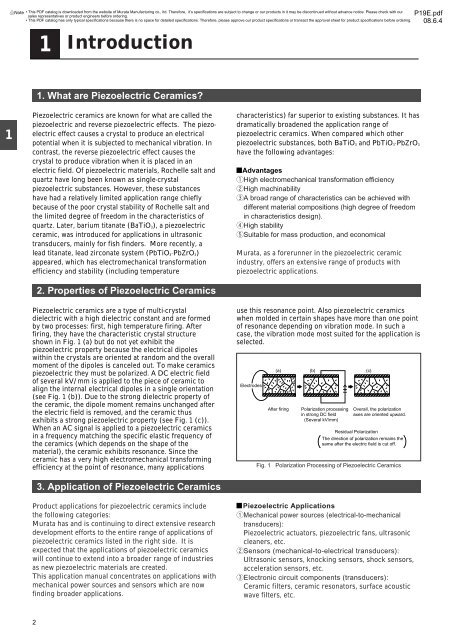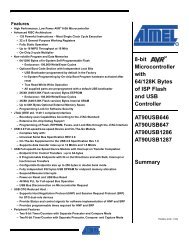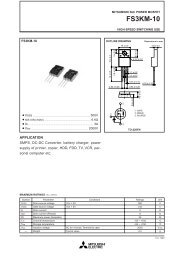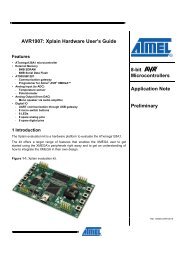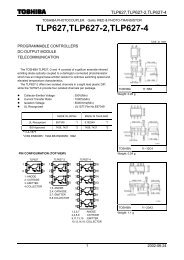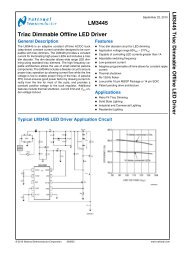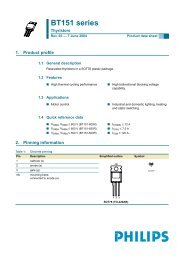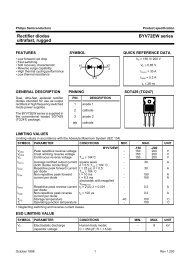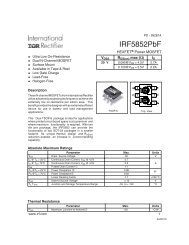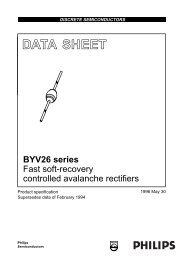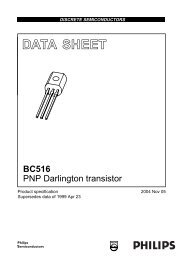Piezoelectric Ceramics ("PIEZOTITE") Sensors
Piezoelectric Ceramics ("PIEZOTITE") Sensors
Piezoelectric Ceramics ("PIEZOTITE") Sensors
You also want an ePaper? Increase the reach of your titles
YUMPU automatically turns print PDFs into web optimized ePapers that Google loves.
!Note • This !Note PDF catalog • Please is downloaded read rating and from !CAUTION the website (for of Murata storage, Manufacturing operating, rating, co., ltd. soldering, Therefore, mounting it’s specifications and handling) are in subject this catalog to change to prevent or our smoking products and/or in it may burning, be discontinued etc. without advance notice. Please check with our<br />
sales representatives • This catalog or product has only engineers typical specifications before ordering. because there is no space for detailed specifications. Therefore, please approve our product specifications or transact the approval sheet for product specifications before ordering.<br />
• This PDF catalog has only typical specifications because there is no space for detailed specifications. Therefore, please approve our product specifications or transact the approval sheet for product specifications before ordering.<br />
1<br />
Introduction<br />
P19E.pdf<br />
08.6.4<br />
1. What are <strong>Piezoelectric</strong> <strong>Ceramics</strong>?<br />
1<br />
<strong>Piezoelectric</strong> ceramics are known for what are called the<br />
piezoelectric and reverse piezoelectric effects. The piezoelectric<br />
effect causes a crystal to produce an electrical<br />
potential when it is subjected to mechanical vibration. In<br />
contrast, the reverse piezoelectric effect causes the<br />
crystal to produce vibration when it is placed in an<br />
electric field. Of piezoelectric materials, Rochelle salt and<br />
quartz have long been known as single-crystal<br />
piezoelectric substances. However, these substances<br />
have had a relatively limited application range chiefly<br />
because of the poor crystal stability of Rochelle salt and<br />
the limited degree of freedom in the characteristics of<br />
quartz. Later, barium titanate (BaTiO 3), a piezoelectric<br />
ceramic, was introduced for applications in ultrasonic<br />
transducers, mainly for fish finders. More recently, a<br />
lead titanate, lead zirconate system (PbTiO 3⋅PbZrO 3)<br />
appeared, which has electromechanical transformation<br />
efficiency and stability (including temperature<br />
2. Properties of <strong>Piezoelectric</strong> <strong>Ceramics</strong><br />
<strong>Piezoelectric</strong> ceramics are a type of multi-crystal<br />
dielectric with a high dielectric constant and are formed<br />
by two processes: first, high temperature firing. After<br />
firing, they have the characteristic crystal structure<br />
shown in Fig. 1 (a) but do not yet exhibit the<br />
piezoelectric property because the electrical dipoles<br />
within the crystals are oriented at random and the overall<br />
moment of the dipoles is canceled out. To make ceramics<br />
piezoelectric they must be polarized. A DC electric field<br />
of several kV/mm is applied to the piece of ceramic to<br />
align the internal electrical dipoles in a single orientation<br />
(see Fig. 1 (b)). Due to the strong dielectric property of<br />
the ceramic, the dipole moment remains unchanged after<br />
the electric field is removed, and the ceramic thus<br />
exhibits a strong piezoelectric property (see Fig. 1 (c)).<br />
When an AC signal is applied to a piezoelectric ceramics<br />
in a frequency matching the specific elastic frequency of<br />
the ceramics (which depends on the shape of the<br />
material), the ceramic exhibits resonance. Since the<br />
ceramic has a very high electromechanical transforming<br />
efficiency at the point of resonance, many applications<br />
3. Application of <strong>Piezoelectric</strong> <strong>Ceramics</strong><br />
Product applications for piezoelectric ceramics include<br />
the following categories:<br />
Murata has and is continuing to direct extensive research<br />
development efforts to the entire range of applications of<br />
piezoelectric ceramics listed in the right side. It is<br />
expected that the applications of piezoelectric ceramics<br />
will continue to extend into a broader range of industries<br />
as new piezoelectric materials are created.<br />
This application manual concentrates on applications with<br />
mechanical power sources and sensors which are now<br />
finding broader applications.<br />
characteristics) far superior to existing substances. It has<br />
dramatically broadened the application range of<br />
piezoelectric ceramics. When compared which other<br />
piezoelectric substances, both BaTiO 3 and PbTiO 3⋅PbZrO 3<br />
have the following advantages:<br />
Advantages<br />
qHigh electromechanical transformation efficiency<br />
wHigh machinability<br />
eA broad range of characteristics can be achieved with<br />
different material compositions (high degree of freedom<br />
in characteristics design).<br />
rHigh stability<br />
tSuitable for mass production, and economical<br />
Murata, as a forerunner in the piezoelectric ceramic<br />
industry, offers an extensive range of products with<br />
piezoelectric applications.<br />
use this resonance point. Also piezoelectric ceramics<br />
when molded in certain shapes have more than one point<br />
of resonance depending on vibration mode. In such a<br />
case, the vibration mode most suited for the application is<br />
selected.<br />
Electrodes<br />
(a) (b) (c)<br />
After firing<br />
Polarization processing<br />
in strong DC field<br />
(Several kV/mm)<br />
Overall, the polarization<br />
axes are oriented upward.<br />
Residual Polarization<br />
The direction of polarization remains the<br />
same after the electric field is cut off.<br />
Fig. 1 Polarization Processing of <strong>Piezoelectric</strong> <strong>Ceramics</strong><br />
<strong>Piezoelectric</strong> Applications<br />
qMechanical power sources (electrical-to-mechanical<br />
transducers):<br />
<strong>Piezoelectric</strong> actuators, piezoelectric fans, ultrasonic<br />
cleaners, etc.<br />
w<strong>Sensors</strong> (mechanical-to-electrical transducers):<br />
Ultrasonic sensors, knocking sensors, shock sensors,<br />
acceleration sensors, etc.<br />
eElectronic circuit components (transducers):<br />
Ceramic filters, ceramic resonators, surface acoustic<br />
wave filters, etc.<br />
2


